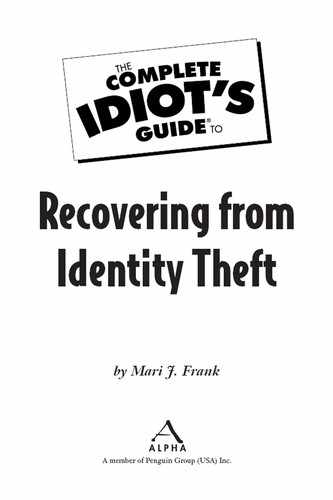Knowing the Deceased Is Targeted
Like other types of identity fraud, you’ll learn that your late loved one is a victim when collection phone calls and letters arrive for the deceased months after his or her passing. When you obtain billing statements and other documents, it’s common that the charges and actions took place after your loved one died.
In the most heartbreaking scenario, a parent who has lost a child may hear from a company or even government authority asking for the child’s whereabouts. Fraudsters can learn a lot about a person who has died from obituaries in the newspaper and family trees at genealogy sites on the Internet. (In fact, it’s a good idea not to post family trees online because they provide fraudsters with good information for stealing an identity.) It’s easy for an impostor to use a deceased person’s good name and reputation to work, get credit, obtain government benefits, avoid prosecution, or do anything that the live person could have done.

Information = Power
Impersonation of deceased children has become very common since infants have received Social Security numbers shortly after birth, as Chapter 9 describes. Famous hacker turned security expert Kevin Mitnick told me on my radio show that he used names and Social Security numbers of deceased children when hiding from authorities so he could work and live undetected. When he thought authorities were near, he’d move to another town, look up death records, and steal the identity of another child. Although he said he always paid the bills, imagine the shock when parents received mailings in the dead child’s name.
Unfortunately, getting personal information for someone who recently died is often no more difficult than going to the U.S. Death Index or looking through the newspaper obituaries and copying the mass of biographical detail listed as part of a commemoration or getting a copy of the U.S. Social Security Death Index. (The SSDI is an easily obtained, regularly updated list of people that the Social Security Administration lists as having died. It includes the person’s Social Security number.)
If the deceased is a good target (in other words, appears wealthy), the fraudster may go online and start the fraud. And because the Social Security Administration is often very slow in reporting deaths to CRAs—and family members forget to report the death to the SSA—the identity thief may have ample opportunity to obtain credit in the deceased’s name.
The first step is to contact the credit bureaus and order copies of the deceased’s credit reports. Dealing with the deceased’s identity theft presents some special challenges.
..................Content has been hidden....................
You can't read the all page of ebook, please click here login for view all page.
